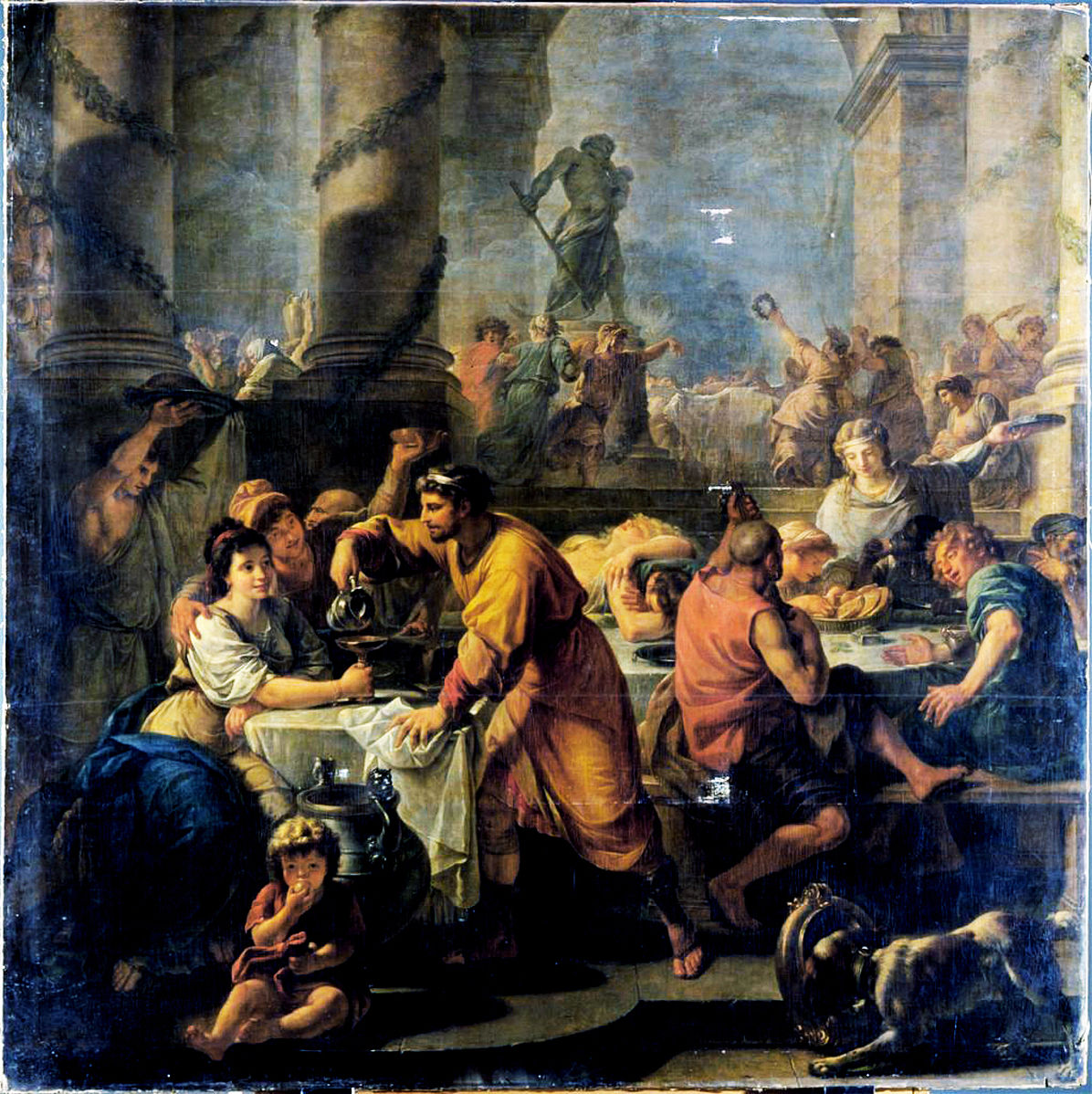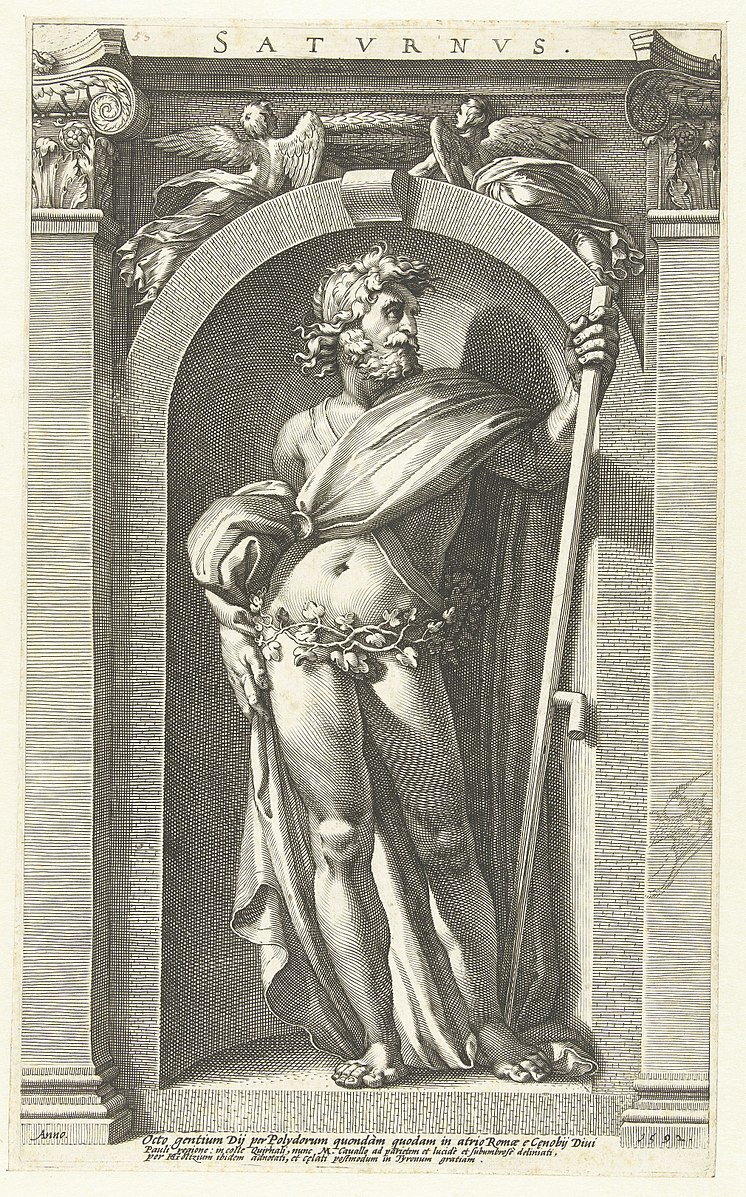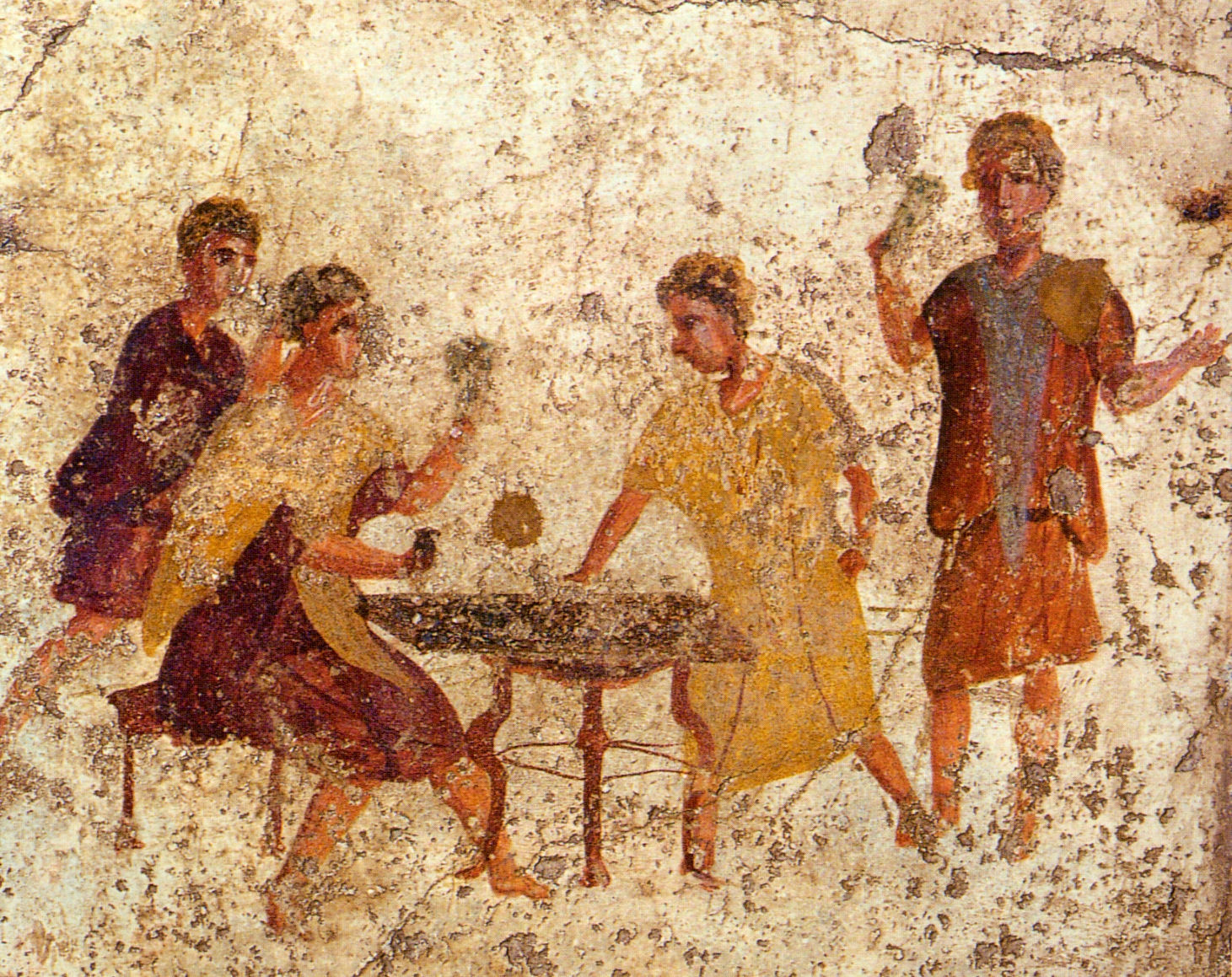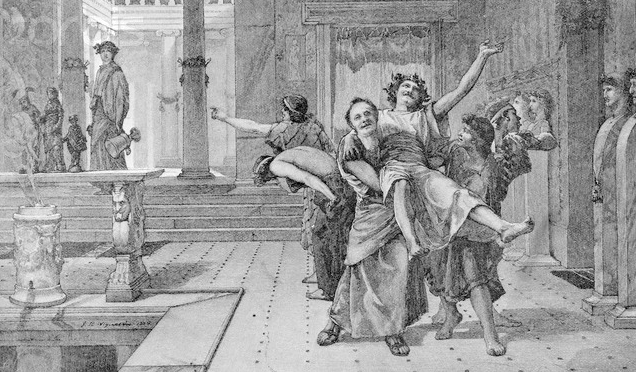
IO SATURNALIA!
Yule may be the most well-known pagan celebration of the Winter Solstice, but it is certainly not the only one—nor is it the only one that lent several of its traditions to Christmas (because yes, many of our modern-day Christmas traditions have pagan roots).
Saturnalia was an ancient Roman festival held on December 17th in honor of the god Saturn. Those of you who are interested in astrology may know Saturn (the planet) as the Greater Malefic, and indeed he is associated with harsh lessons such as limitations, karma, structure, discipline, and sometimes decay or destruction. But there is much more to Saturn than this narrative!
To the Ancient Romans, Saturn was also an agricultural god and the ruler of a great Golden Age, a time of abundance and perfect peace. He taught the people about agriculture and how to save their money, so they might never experience hunger or poverty again—the payout of discipline and restraint.

Saturnalia—and the time of the Winter Solstice—is a celebration of both sides of Saturn: the discipline and grueling work that we have completed throughout the year (especially relevant for an agricultural society like Ancient Rome, yet still meaningful today), rewarded with a period of rest and merrymaking.
Because indeed, that is exactly what Saturnalia is about: merrymaking.
How to Celebrate Saturnalia
Traditionally, Saturnalia was a day when all work came to halt. The courts of law closed, and social norms were flipped upside down. Role reversal was a common theme; for instance, slaves were typically served dinner before their masters, and may have even been served by the masters themselves.
Households elected a “King of the Saturnalia” (also known the Lord of Misrule in modern times) who was tasked with causing mischief and creating chaos, usually by yelling commands that other partygoers had to obey.

Individuals spent the day drinking, gambling (normally discouraged in Rome’s strict society), singing, and feasting. Drunkenness and other self-indulgent behaviors became the norm. Io Saturnalia was the official salutation of the festival, often used after singing or joke-telling.
Gift-giving was another common theme of Saturnalia. Small terracotta figurines and candles (a symbol of the light returning after the Winter Solstice) were typical gifts, along with other cheap items. It is believed that low-value gifts may have correlated with high-value relationships—the very first gag gifts!

In terms of aesthetics, brightly colored clothing was the norm during Saturnalia. The interior of the home would be decorated with evergreen wreaths and garland, a common symbol of the Winter Solstice across various European cultures.
Eating, drinking, singing, gift-giving, decorating with evergreens and candles…it all sounds a bit familiar, doesn’t it? Because so many of Saturnalia’s traditions have carried over into our modern Christmas celebrations, I believe that even pagans who aren’t “out of the closet” can easily celebrate Saturnalia.
Just remember that Saturn is the reason for the season
That said, there was of course a highly important religious component to the ancient Saturnalia celebrations. This took place at the Temple of Saturn, and involved unbinding the feet of a Saturn statue as a symbol of liberation. It is worth noting that the priest’s head was uncovered for this ritual—perhaps a nod to the holiday’s tradition of role reversal, as Roman priests typically covered their heads.
As a bit of an aside, this Saturnalia feels particularly meaningful to me. Why? Saturn moves from Capricorn into Aquarius on December 17th, signaling the start of my Saturn Return. For those not familiar, Saturn Returns are thought to be a time of great transformation as we shift into our more adult roles and gain clarity about our life’s purpose.
Like many transitions, Saturn Returns can be painful—but ultimately rewarding, especially the more you lean into that change. I will personally be celebrating Saturnalia by:
- Daytime / Discipline:
- Reflecting on / journaling about my long-term goals and life plans (a process I began back in March, when Saturn briefly dipped into Aquarius before retrograding back into Capricorn for the remainder of the year)
- Giving offerings and expressing my gratitude to Saturn (who has been an important part of my spiritual practice for exactly one year, since last year’s Saturnalia)
- Nighttime / Merrymaking
- Dressing up in my most colorful clothing
- Perhaps making a few treats for my family to enjoy
- Enjoying a healthy dose of hedonism (i.e. drinking an abundant supply of wine and allowing my 15-pound dog to boss me around)
However you plan to celebrate, Io Saturnalia!


















Leave a Reply